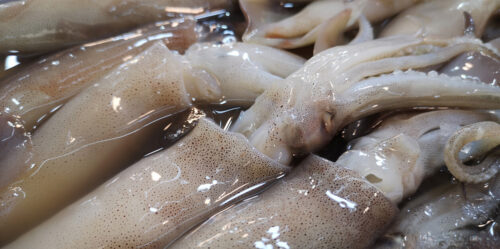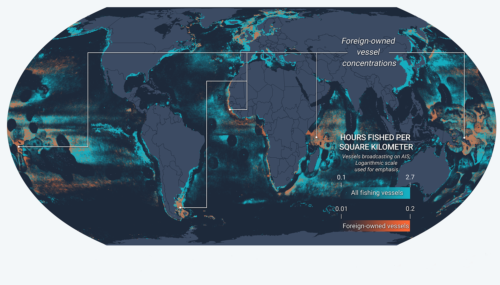Last month, the EU Fisheries Council of Ministers slashed next year’s catch quota for the Western Baltic Sea cod by 56 percent. It was a bold move that has fishermen concerned for their livelihoods and scientists concerned for the sustainability of the stock. Though unprecedented, the reduced quota is nowhere near the 93 percent cut scientists say is needed to sustain a healthy cod population. Which leaves us wondering, what happened last year to drive such dramatic recommendations, and are we about to witness another fishery collapse?
Why The Big Cut?
The western population of Baltic Sea cod, which is distinct from the eastern population, has been in decline for several years now. Scientific stock assessments have consistently led to reductions in the Total Allowable Catch (TAC) year after year. Last year alone the quota was cut by 19 percent, and yet, the population continues to struggle.
The International Council for the Exploration of the Sea (ICES) is the scientific body that determines how much cod can be fished while still maintaining a sustainable population. This year, when they sat down to assess the western cod data from Baltic Sea nations, they included recreational fishing in their calculations. That was a first, and it made all the difference.
German anglers alone extract two-and-a-half metric tons (tonnes) of Western Baltic Sea cod every year. (That’s roughly one-fifth of this year’s TAC.) Deducting that from the TAC left a much smaller share for commercial fishermen—just 917 tonnes, 7 percent of what they were allowed last year.
“It was like a cold shower to everyone,” says Andrzej Białaś, a policy advisor for Oceana who works extensively on Baltic Sea issues. When the recommendations came out, Oceana argued for a complete temporary closure of the fishery in 2017 to let the population recover.
“If you are advocating for reducing the total allowable catch to 900 tonnes” he says, “you might as well advocate for a full closure, because the stock is in such a bad shape. According to the scientific advice, it’s below any reference point for a healthy stock, which basically means it’s on the brink of collapse.”
But the EU Fisheries Council, which has the authority to set the commercial quotas based on ICES’s recommendation, didn’t see it that way. They raised the limit for the benefit of the fishermen. Initially they proposed a TAC of 1,588 tonnes (12.5 percent of 2016 catch), but by the end of negotiations between ministers from all member states, the 2017 TAC was set at 5,597 tonnes–a 56 percent cut over 2016, but still more than six times the scientific recommendation.
By the numbers:
• Last year’s Total Allowable Catch (TAC): 12,720 tonnes
• Scientific recommendation for 2017 TAC: 917 tons (93% reduction).
• European Commission’s initial proposed TAC: 1,588 tonnes, (87.5% reduction)
• Final agreed upon TAC: 5,597 tonnes: 56% cut over 2016, but still more than 6 times the scientific recommendation.
On the Verge of Collapse?
Although a complete closure would deny an important source of income to Baltic Sea fishermen (who also target sprat and herring), the example of the Newfoundland cod fishery may serve as a warning against waiting too late. In 1992, the fishery collapsed after years of resisting scientific quota recommendations. Entire towns lost their reason for being overnight, and tens of thousands of people were forced to live on government subsidies.
Eric Dunne, regional director of the Canadian Department of Fisheries and Oceans at the time told the Boston Globe in 2012 the best approach would have been to err on the side of lower catch limits. “It’s easy to say and hard to do,” he said, “but if you push the limit of what’s being advised, you’ll be in trouble.’’ Twenty-five years after the collapse, cod are just starting to show signs of recovery in Newfoundland.
The Western Baltic Sea cod is experiencing some of the same signs exhibited in the early stages of the Newfoundland collapse. Fish are breeding at a younger age and fewer are reaching legal size each year. Their range is shrinking as well. The similarities are troubling, but it would be unwise to place too much weight on the comparison. These two cod stocks are biologically distinct. Even if they are the same species, there are significant differences between the two, not the least of which are environmental.
The Baltic is an enclosed sea that relies on large inflows of new salt water from the North Sea to bring both salt and oxygen. Oxygen replenishment is especially important in the cool deep water that doesn’t mix easily with the warmer, saltier, more well-oxygenated water at the surface. The balance of temperature, salinity and oxygen is critical for cod at different stages in their development. As bottom dwellers, the adults suffer when oxygen levels drop. Their eggs, however, are floaters, dependent on high salinity to remain at the surface.
Species that depend on a narrow set of highly variable conditions are naturally more vulnerable to years when the environment doesn’t cooperate with their needs. The flow of water from the North Sea varies dramatically from year to year, which means conditions in the Baltic are extremely unpredictable. Populations such as cod that are already fished to the limit of sustainability or below have little wiggle room when a bad year hits.
Białaś says closing the fishery for just one year might have provided enough relief to the young fish and spawning stock to lift it out of immediate danger. He says he’s disappointed that the new quota is so much higher than what the science supports, but he’s still hopeful. A 56 percent cut is larger than any before, and recognition that recreational fishing should be factored in is a positive development. “With this step, it is headed in the right direction,” he says, “but we won’t know the effect until next year. Only time will tell if it is enough.”

